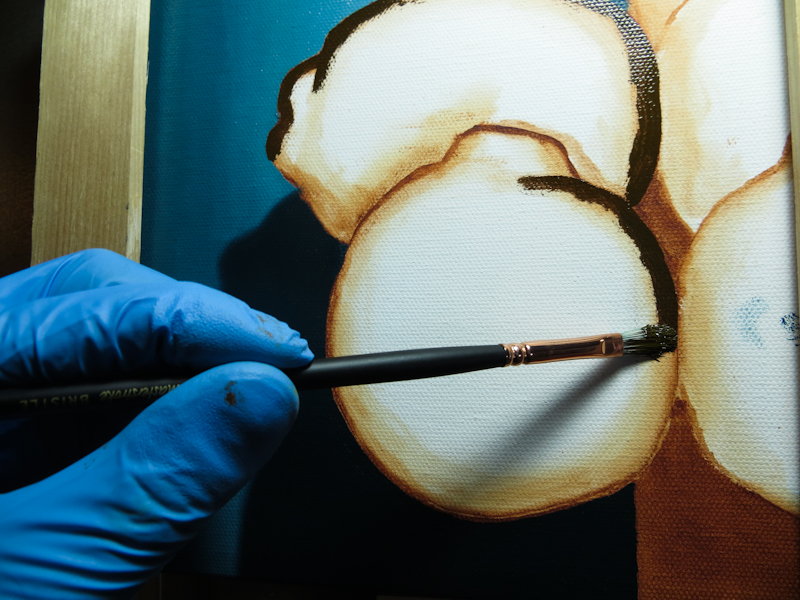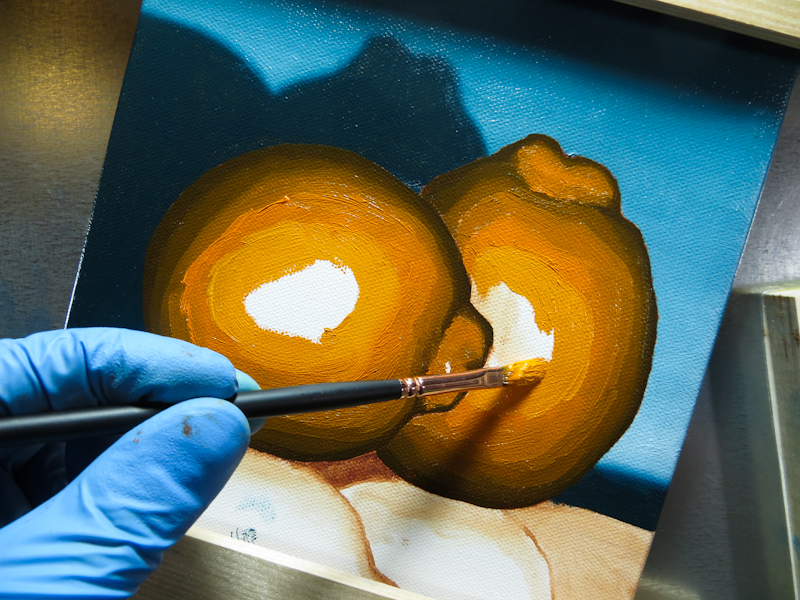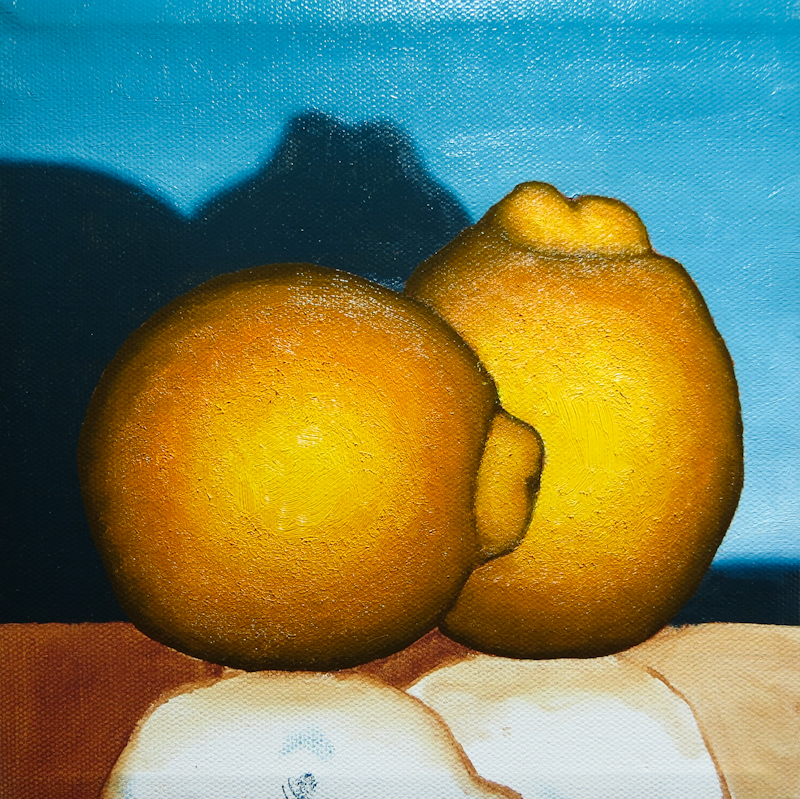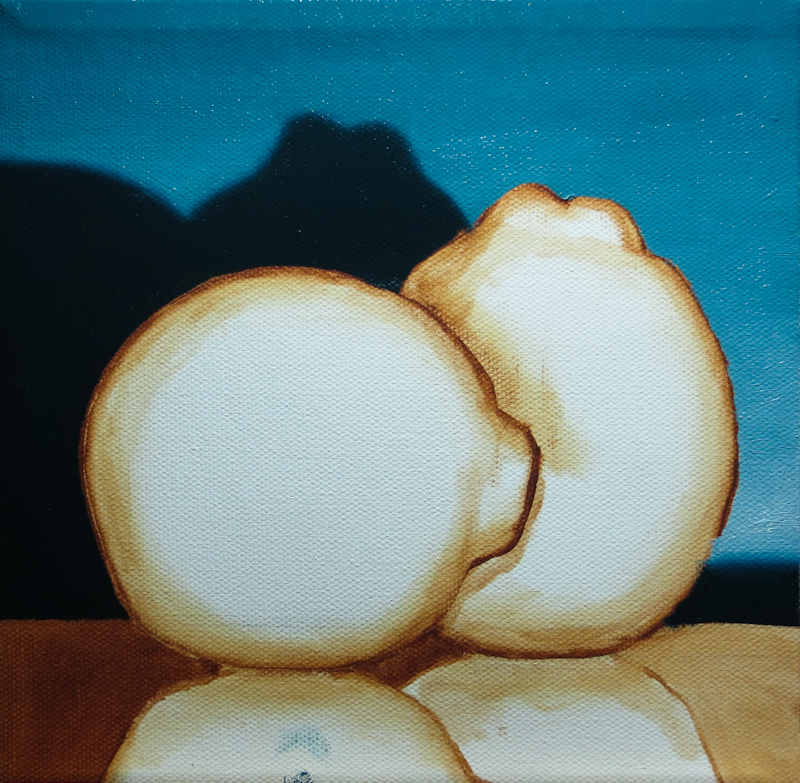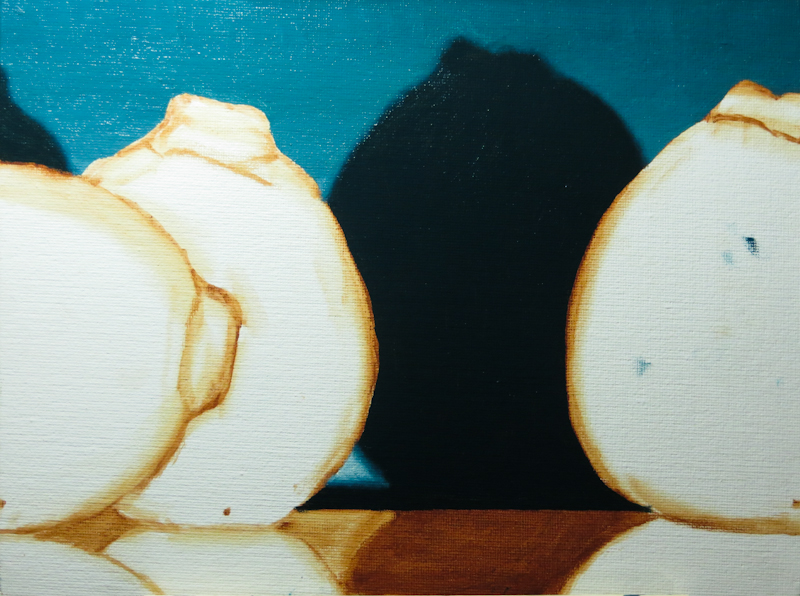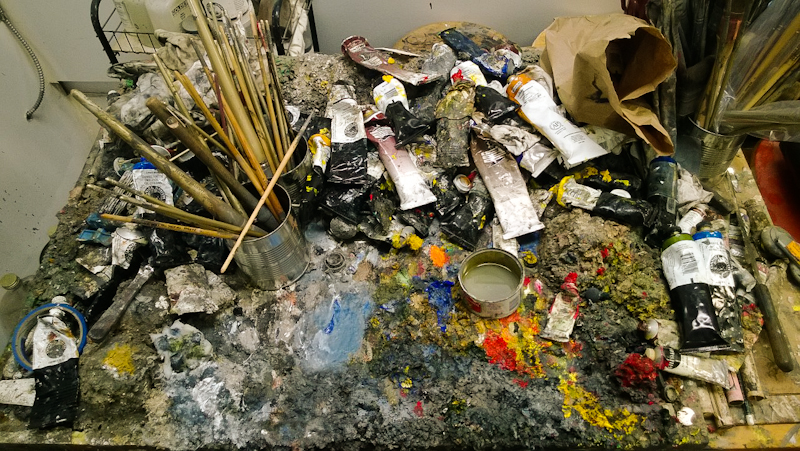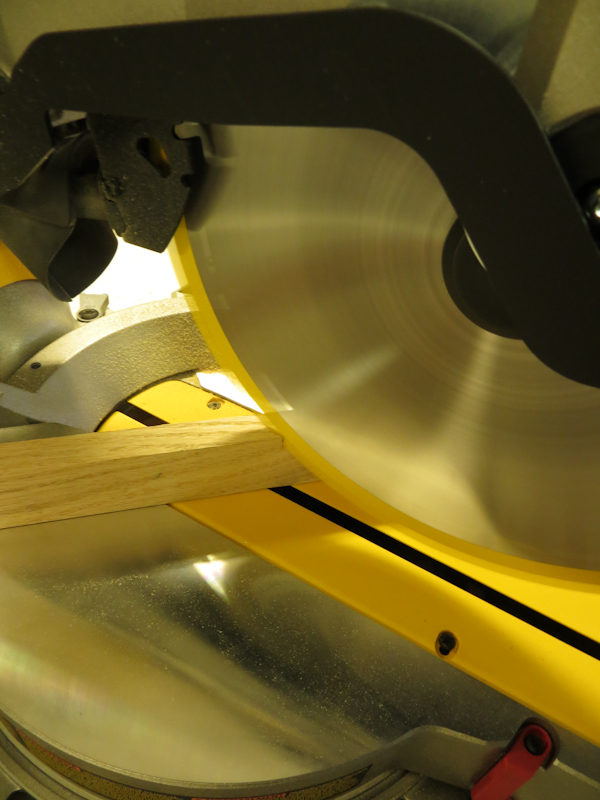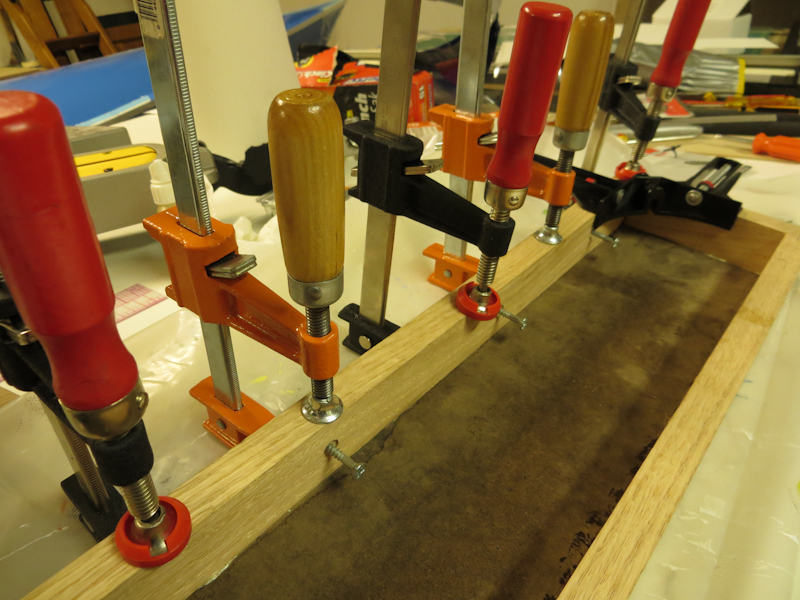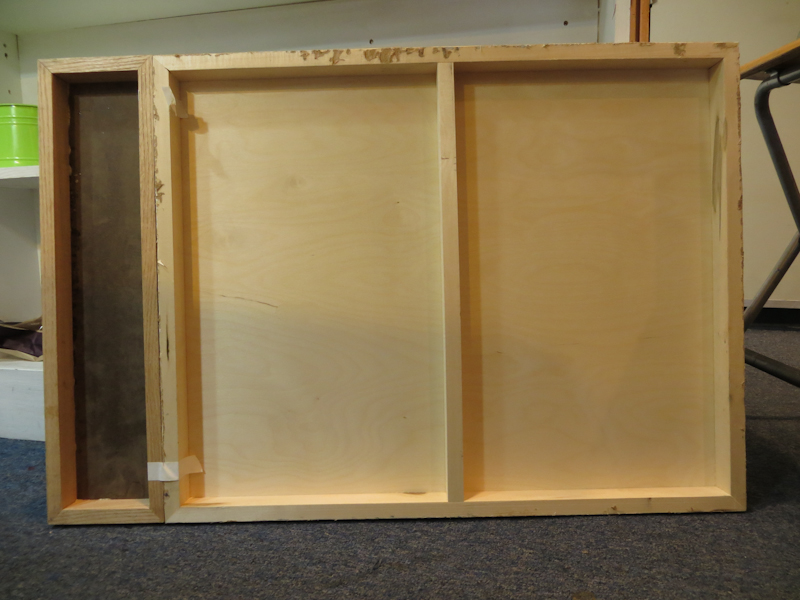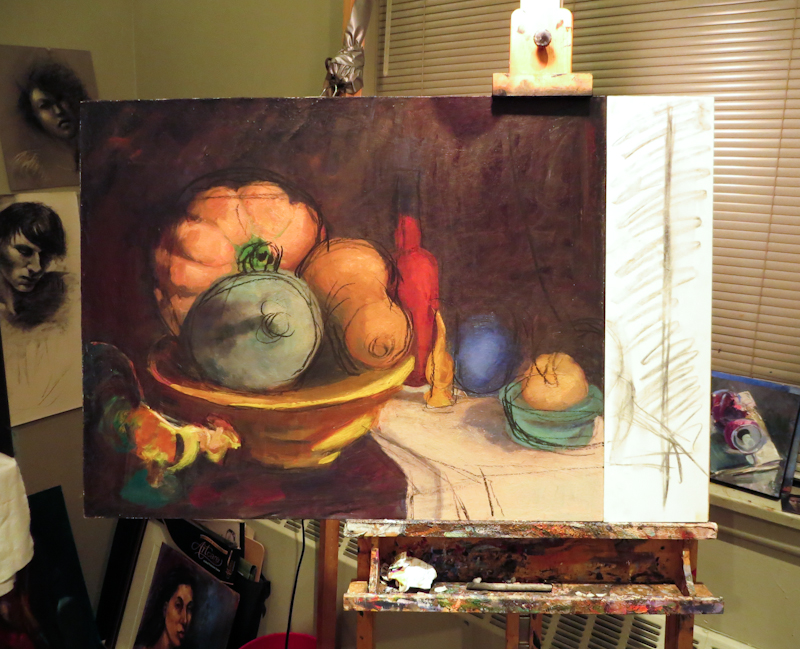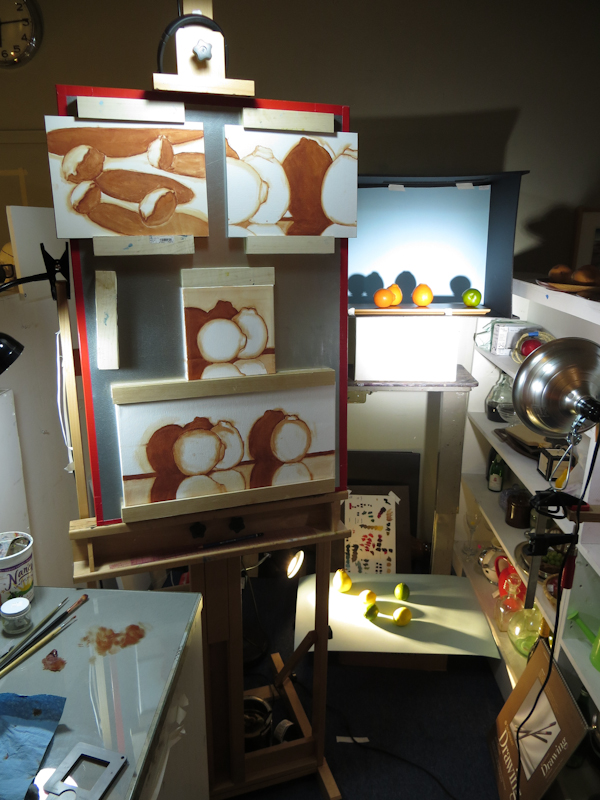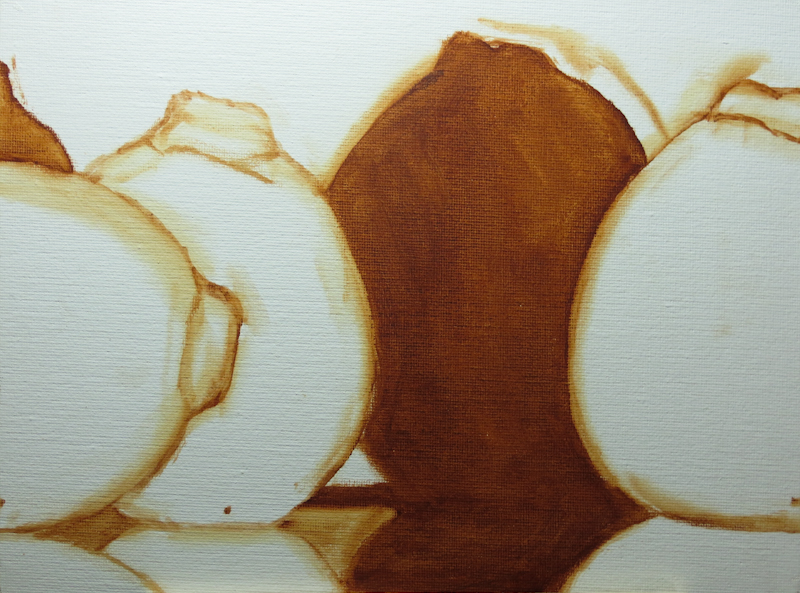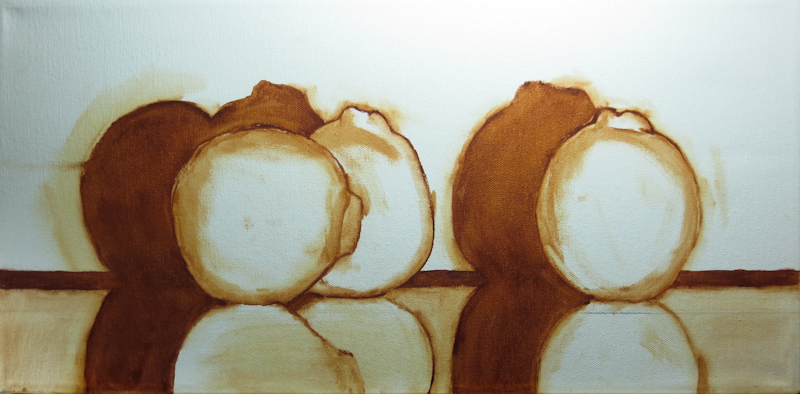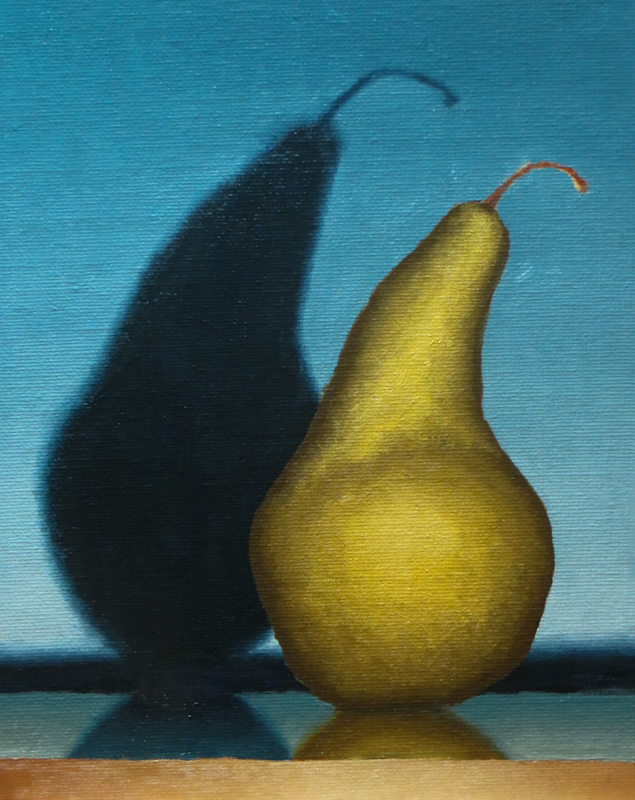After a lot of shades of blue, I am now working with orange paint. My string was based on Cadmium Orange, with Cadmium Yellow and Titanium White at the lighter end, and Prussian Blue and Burnt Umber at the dark end. The results are pretty good, but I found the process harder than when I was painting the pears – this session took me almost four hours, and two of the hours were spent readjusting the form and then evening out the gradient.
I think the next one will go smoother if I paint with finer gradient steps and I get the initial placement of the paint more accurate. One thing that slowed me down was that I made the darker regions too wide and this caused me to adjust and readjust the gradient many times over. If I had painted the dark regions in the right place, at the right size, the first time, I would only have had to smooth the gradient once.
The other thing I want to improve is subtlety of the transition between the body of the Mineola and the lump where the stem attaches. In the picture, below, the transitional region is too dark.

